
Animal
14:50, 08-Feb-2019
Animals' way home: How do dolphins navigate the ocean?
By Zhang Xinrui, Ding Qian
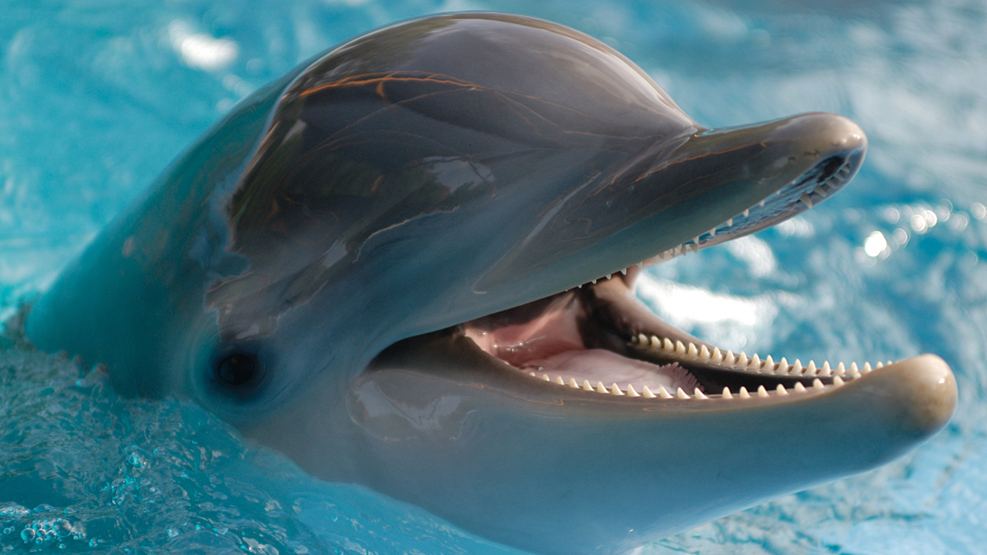
Dolphins are not just beautiful; they are also highly intelligent marine mammals. Most of them live in shallow seas worldwide and a few species live in rivers. They consume varieties of fish, squid, and crustaceans.
When the freezing weather comes and water temperatures drop, coastal dolphins start their migration south for warmer waters and possibly more abundant prey.
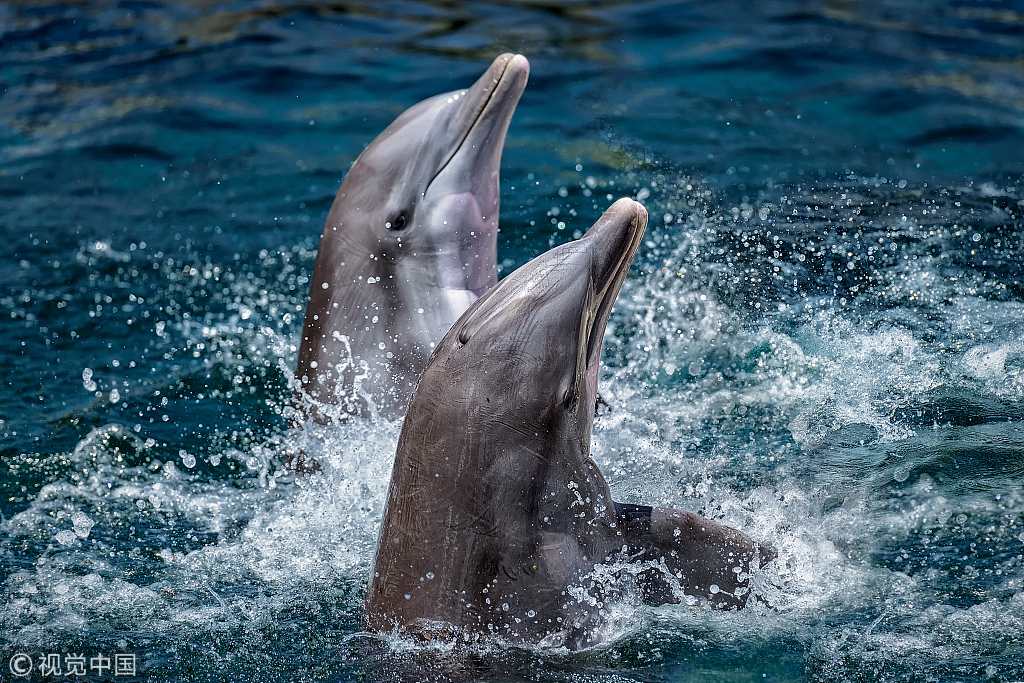
Dolphin dance /VCG Photo
Dolphin dance /VCG Photo
How do dolphins find their way through boundless ocean? The answer is that they use echolocation to identify directions, detect water depth, and find fish as well as crustaceans.
Studies have shown that even when the eyes of the dolphins are covered and the water is cloudy, they can still quickly and accurately locate their targets.
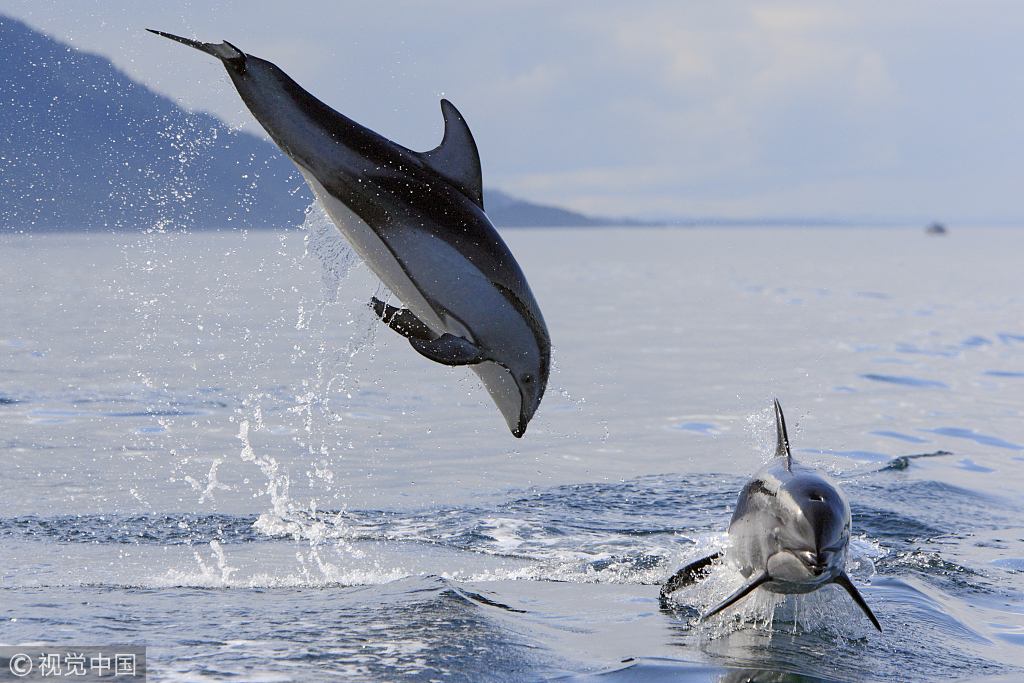
Pacific white-sided dolphins, Johnstone Strait, BC, Canada /VCG Photo
Pacific white-sided dolphins, Johnstone Strait, BC, Canada /VCG Photo
Besides, as part of the suborder of toothed whales they also have their own language. You will find that dolphins are quite "noisy" animals while diving with them.
There is a breathing hole at the top of the dolphin's head with a valve inside. When the air enters the breathing hole, dolphins can adjust the size of the airflow with the valve so as to make different sounds.
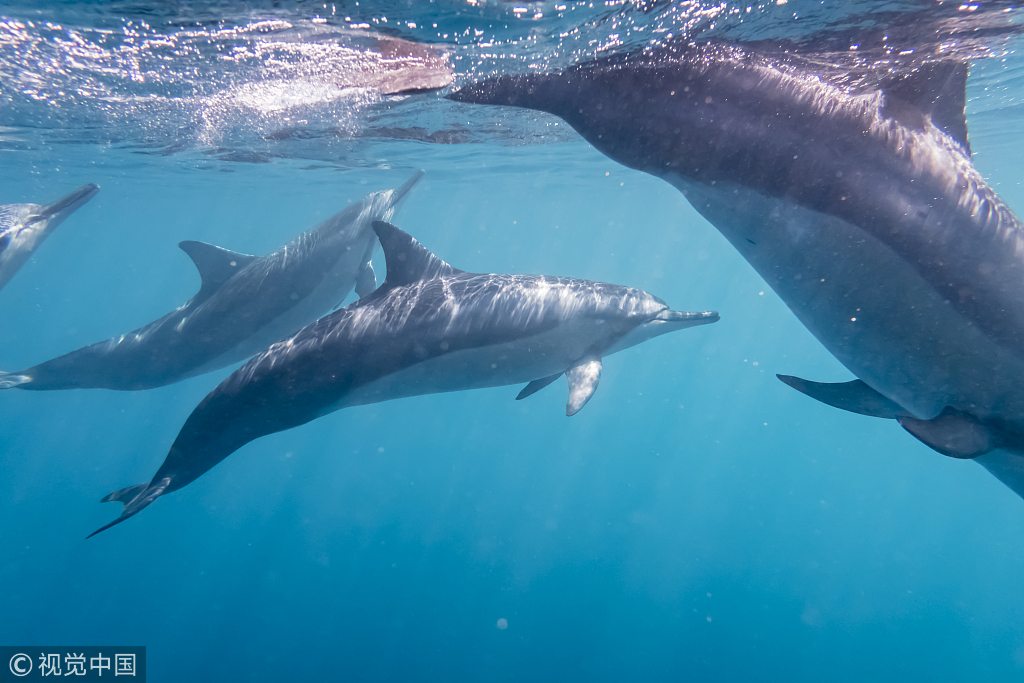
Bottlenose dolphins in the Indian Ocean /VCG Photo
Bottlenose dolphins in the Indian Ocean /VCG Photo
According to recording surveys, dolphins perform echo positioning with an ultrasonic screaming frequency of 200-350 kHz. However, a human's hearing range is between 16-20 kHz, which means humans cannot hear dolphins' ultrasound. Therefore, the dolphin screams we hear in the water may be the part of the low-frequency sound they use to interact with each other.
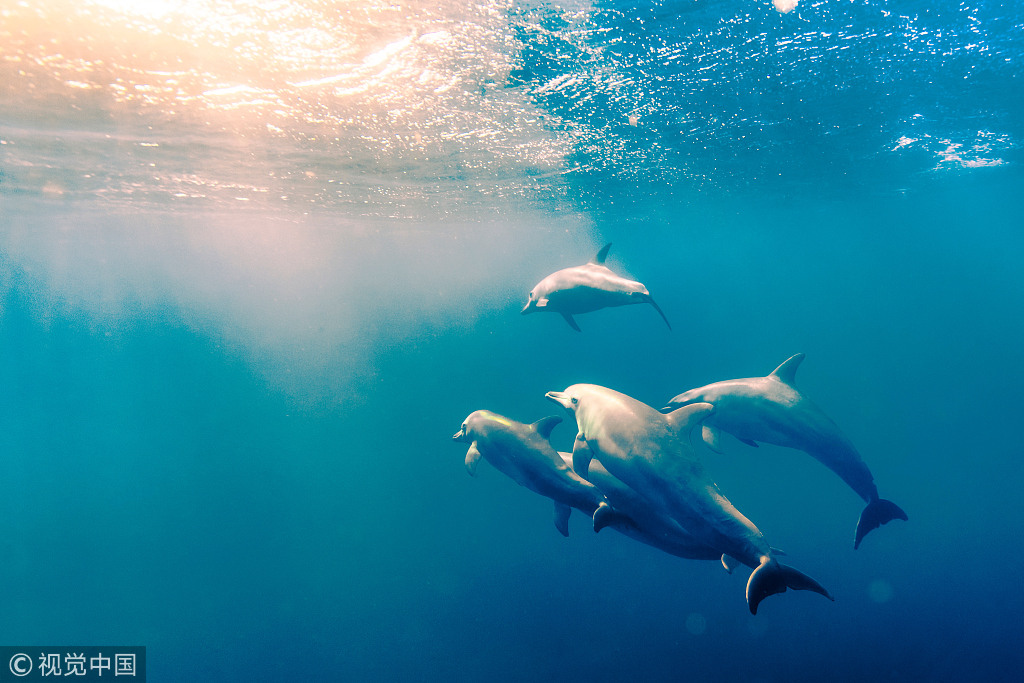
Dolphins swimming in sea /VCG Photo
Dolphins swimming in sea /VCG Photo
Dolphins are regarded as one of the most intelligent animals on earth. They are highly social and considered friends of humans. However, there is still much to learn about them.
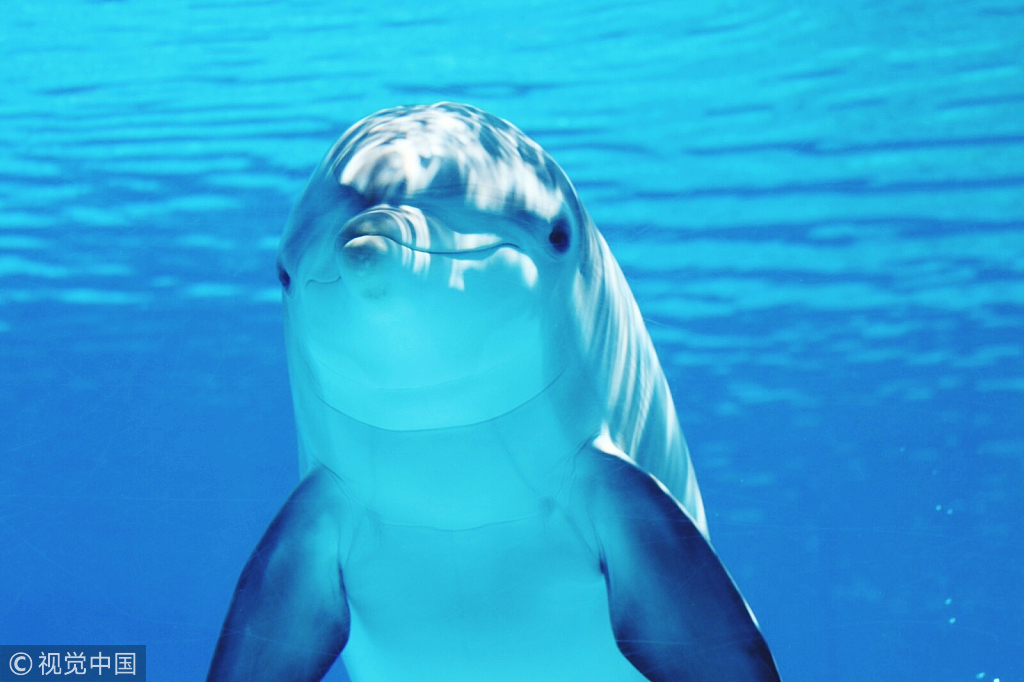
Close-up of dolphin swimming underwater /VCG Photo
Close-up of dolphin swimming underwater /VCG Photo
The reduction of using pesticides, plastics and other pollutants not only help us, but also help dolphins and other animals. After all, we all share one home that's called earth.
(Close-up of dolphin. /VCG Photo)

SITEMAP
Copyright © 2018 CGTN. Beijing ICP prepared NO.16065310-3
Copyright © 2018 CGTN. Beijing ICP prepared NO.16065310-3